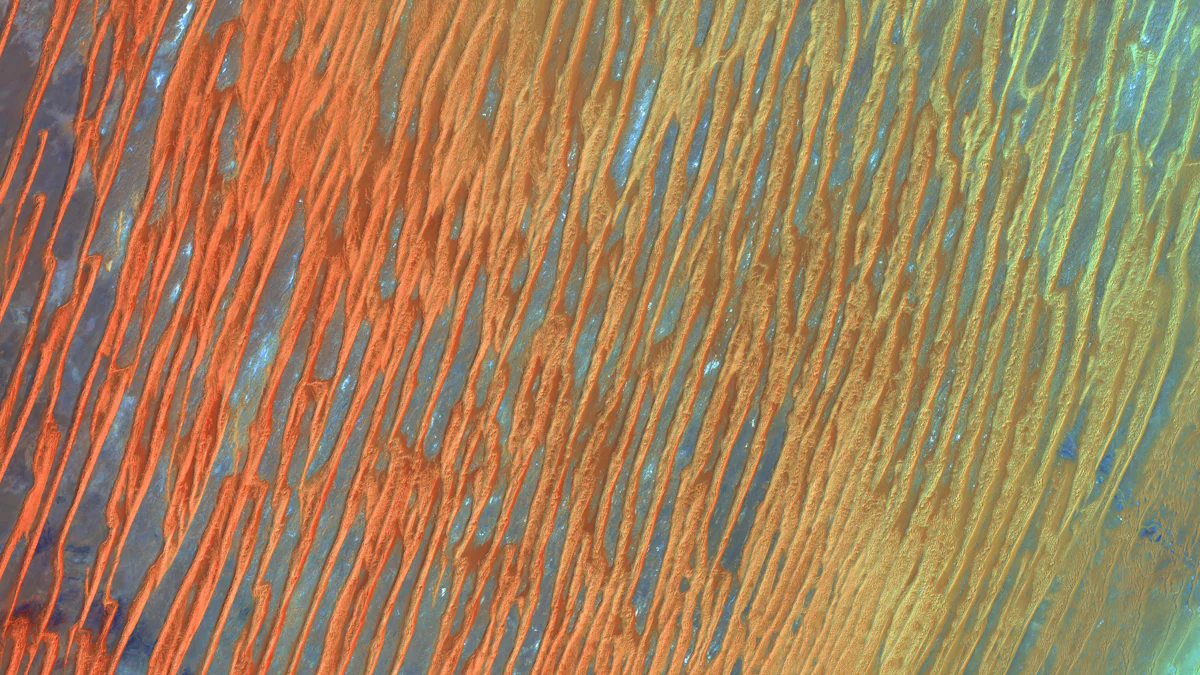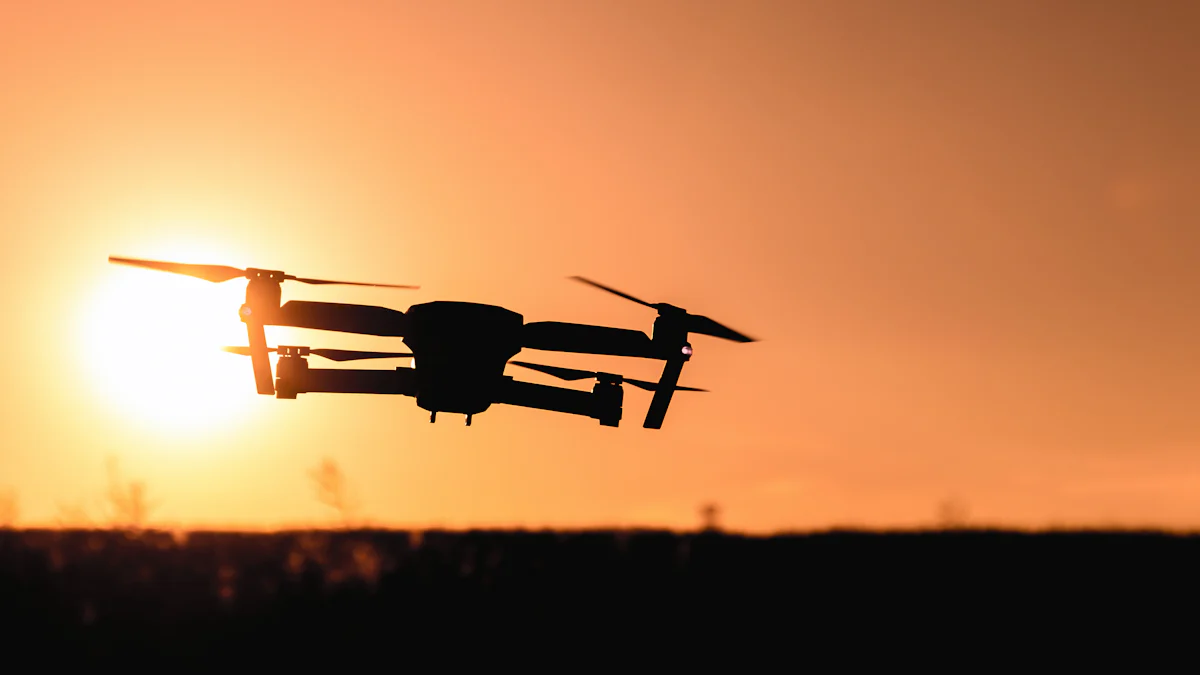Unveiling the Future: UAV Thermal Cameras Revolutionize Drone Tech

UAV thermal cameras, essential in modern drone tech, offer unparalleled capabilities. The cutting-edge technology enables drones with thermal imaging cameras to capture thermal images with precision and accuracy. These cameras play a crucial role in various industries, from military surveillance to environmental monitoring. With a projected market growth of XX% from 2024 to 2031, reaching a value of USD XX billion by 2031, the significance of thermal imaging cameras for drones is undeniable.
The Rise of UAV Thermal Cameras

In the early 19th century, Sir William Herschel's discovery of infrared radiation sparked the first experiments with thermal imaging. By 1992, the American Society of Non-Destructive Testing had developed standards for teaching thermal imaging courses, leading to new applications in various industries. Towards the end of the 20th century, significant advancements in thermal imaging technology emerged, revolutionizing its capabilities.
Evolution of Thermal Imaging Technology
Early Developments
Early experiments with thermal imaging laid the foundation for its integration into various fields. The discovery of infrared radiation marked a pivotal moment in scientific history, paving the way for innovative uses of this technology.
Integration with UAVs
The integration of thermal imaging cameras with UAVs has opened up a realm of possibilities for aerial surveillance and data collection. Drones equipped with these advanced cameras can now capture detailed thermal images from vantage points that were previously inaccessible.
Key Features of Modern UAV Thermal Cameras
High-Resolution Imaging
Modern UAV thermal cameras boast high-resolution capabilities, allowing for clear and detailed thermal imagery. This feature is crucial for applications that require precise temperature measurements and analysis.
Day and Night Operations
One of the standout features of thermal imaging cameras for drones is their ability to operate seamlessly day and night. This round-the-clock functionality makes them invaluable tools for tasks that demand continuous monitoring and surveillance.
Leading UAV Thermal Camera Models
Autel EVO II Dual 640T V2
The Autel EVO II Dual 640T V2 stands out as a top-tier drone designed specifically for high-quality imaging. With an 8k camera and a 640*512 thermal imager, this model sets a new standard in aerial photography.
UAV400T
Compact yet powerful, the UAV400T is a quadcopter drone equipped with an electric propulsion system and a cutting-edge thermal imaging camera. Its reconnaissance capabilities make it an ideal choice for various missions.
Supercam S350
The Supercam S350 is a flagship unmanned aircraft system renowned for its extended flight duration of up to 4.5 hours. Designed for aerial photography and video monitoring, it offers unparalleled performance in capturing dynamic visuals.
Applications in Various Industries

Military and Surveillance
Border Control
In the realm of border security, UAV thermal cameras have revolutionized surveillance operations. By utilizing advanced thermal imaging technology, border control agencies can detect unauthorized crossings with heightened accuracy. The precise thermal imagery captured by drones equipped with these cameras enables border patrol agents to monitor vast areas efficiently. This enhanced surveillance capability plays a crucial role in safeguarding national borders and preventing illicit activities.
Search and Rescue
When it comes to search and rescue missions, the integration of thermal imaging drones has significantly improved operational efficiency. Equipped with cutting-edge thermal sensors, these drones can swiftly locate individuals in challenging terrains or low-visibility conditions. The ability to detect body heat signatures allows search and rescue teams to expedite their efforts and increase the chances of successful outcomes. By leveraging the capabilities of UAV thermal cameras, rescue operations can be conducted swiftly and effectively, saving lives in critical situations.
Industrial Inspections
Infrastructure Monitoring
In the field of infrastructure monitoring, UAV thermal cameras play a vital role in identifying potential hazards and structural issues. By conducting aerial inspections using drones equipped with thermal imaging technology, infrastructure managers can detect anomalies such as overheating components or insulation deficiencies. This proactive approach to monitoring helps prevent equipment malfunctions and ensures the safety and integrity of critical infrastructure assets.
Geothermal Exploitation
The application of thermal imaging drones in geothermal exploitation monitoring has transformed how geothermal energy resources are managed. By capturing detailed thermal images of geothermal sites from aerial perspectives, these drones provide valuable insights into subsurface temperature variations and potential resource locations. The data obtained through thermal imaging surveys enables geologists and energy companies to make informed decisions regarding resource exploration and extraction strategies.
Marine and Environmental Uses
Yacht Surveillance
For yacht owners seeking enhanced security measures, thermal imaging drones offer a sophisticated solution for surveillance purposes. Equipped with advanced thermal sensors, these drones can monitor yacht perimeters during both daytime and nighttime hours. The real-time thermal imagery provided by UAVs enhances onboard security by detecting intrusions or unauthorized access attempts promptly. Yacht surveillance systems integrated with thermal imaging technology provide peace of mind to owners while ensuring the safety of passengers and crew members.
Wildlife Monitoring
In environmental conservation efforts, thermal imaging drones have become invaluable tools for wildlife monitoring initiatives. By conducting aerial surveys using drones equipped with thermal sensors, conservationists can track animal movements and behavior patterns without causing disruptions. The non-intrusive nature of thermal imaging allows researchers to observe wildlife from a distance while gathering essential data for conservation projects. Through the use of UAV thermal cameras, wildlife monitoring efforts are more efficient, accurate, and environmentally friendly.
Future Prospects
Technological Advancements
Enhanced Sensors
Innovations in thermal imaging technology are propelling the development of UAV thermal cameras towards enhanced sensor capabilities. The integration of advanced sensors allows drones to capture more detailed and precise thermal images, expanding their applications across various industries. By improving sensor resolution and sensitivity, these next-generation UAV thermal cameras can provide sharper thermal data for critical analysis and decision-making processes.
To meet the growing demands for higher image quality and accuracy, manufacturers are focusing on enhancing the sensitivity of thermal sensors. By optimizing the detection of infrared radiation emitted by objects, drones equipped with these enhanced sensors can deliver superior thermal imaging performance. This technological advancement enables UAV thermal cameras to detect subtle temperature differences with greater clarity, making them indispensable tools for a wide range of applications.
Moreover, advancements in sensor technology are driving improvements in image processing algorithms. By incorporating cutting-edge algorithms into UAV thermal cameras, manufacturers can enhance image optimization and noise reduction capabilities. These sophisticated algorithms enable drones to generate clearer and more refined thermal images, ensuring reliable data interpretation for users across industries.
AI Integration
The integration of artificial intelligence (AI) technologies is revolutionizing the functionality of UAV thermal cameras, paving the way for smarter and more efficient operations. AI algorithms empower drones to analyze thermal data in real-time, identifying patterns and anomalies with unprecedented speed and accuracy. By leveraging machine learning capabilities, UAVs can autonomously process vast amounts of thermal imagery, extracting valuable insights for diverse applications.
One key area where AI integration is making a significant impact is in predictive maintenance strategies. By analyzing historical thermal data collected by drones, AI algorithms can predict equipment failures or malfunctions before they occur. This proactive approach helps organizations optimize maintenance schedules, reduce downtime, and prevent costly repairs. The combination of UAV thermal cameras and AI-driven analytics offers a proactive solution for asset management across industries.
Furthermore, AI-powered drones equipped with thermal imaging technology are enhancing security measures in surveillance applications. By deploying intelligent monitoring systems that can differentiate between normal activities and potential threats based on thermal signatures, security personnel can respond swiftly to security breaches or unauthorized access attempts. The seamless integration of AI into UAV thermal cameras is redefining surveillance standards by providing real-time threat detection capabilities for enhanced safety and security protocols.
The growing demand for UAVs in precision agriculture, disaster response, and infrastructure inspection is propelling the market forward.
Businesses are leveraging UAV thermal cameras to enhance operational efficiency, safety measures, and decision-making processes.
UAV thermal imaging cameras play a significant role in shaping the future of thermal imaging technology.
See Also
Cutting-Edge Innovation: Analog FPV Thermal Cameras Transforming Drone Technology
Analog FPV Thermal Camera: A Revolutionary Tool for Drone Tech and Surveillance
The Path Ahead: Benefits of Thermal Imaging for DJI Drones in 2024
Transforming Field Gear: Thermal Imaging Cameras for Quadcopter Drones
Progress in Thermal Imaging Tech for Compact Cameras on Drones
Contact Us: Ms. Coco Huang
E-mail: sales@iasun.cn
WhatsApp/Wechat: +86 13510421923

